Some Time in Micronesia
by The Hairpin
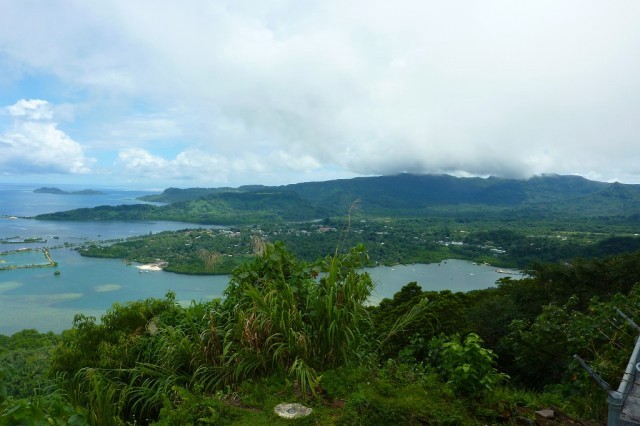
In 2011, Emily Maretsky moved to the Federated States of Micronesia to teach high school English.
Edith Zimmerman: Emily — Micronesia. What took you there?
Emily Maretsky: After I started my first post-college job in New York, I kept having conversations with people ten years older than I was who were all, “You can’t make mistakes in your 20s!” and “Go take risks now that you don’t have a mortgage/a husband/a crazy career!” I’d originally planned to go travel/live abroad when I finished college, but put aside my plans for a job offer. Hearing that advice was really the kick in the butt to get moving, lest I end up ten years later talking about the grand plans I had but never followed through on. So I applied to a bunch of volunteering and teaching abroad programs, but really got stuck on this one in Micronesia. That was November 2010 — do you remember that winter in NYC?? Record cold and snowy. Living on a tropical island couldn’t have sounded any better while trudging through two feet of snow in early winter. And I’ll be honest here, “Micronesia” just sounded more interesting than “American Samoa,” which I was also considering at the time.
So I moved to the main island of Pohnpei (population: 35,000ish), where I taught 12th grade English at a regional high school. A number of my students arrived on Pohnpei via a cargo ship from their home islands at the beginning of the year, and lived in the school dorms or with extended family (outer islands don’t have high schools). The ship usually makes two trips a year to the outer islands, but in March, it made an extra trip and a couple of my students asked to miss class to go home to see their families for a few days. One thing led to another, and one of my students actually invited me to come with him and stay with his family for a week on his island, Sapwuahfik. I’d been so curious about the outer islands and they’re so difficult to get to, so I jumped at the chance and showed up at the boat dock a day or two later.
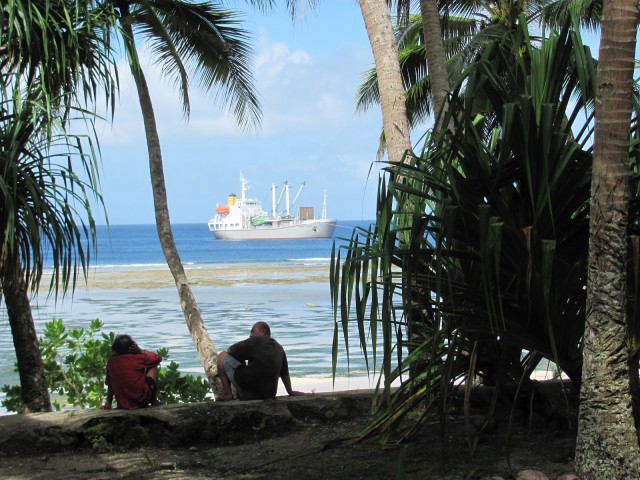
When you travel, does it feel like you’re moving toward something or going away from something, in general?
It’s a little of both. Back in New York before I left, I felt uneasy — postgrad life was progressing smoothly, but I was heading down a path I wasn’t sure about and hadn’t tested other options. I felt guilty for being another unappreciative twentysomething struggling through adultescence, but figured I’d be the only one to blame if I didn’t take the leap and try other opportunities. So when I left, traveling meant getting away, really taking a big step back from everything at home to evaluate without being in the thick of my normal routine.
Still, I was going away in hopes of moving toward something. I left romantically expecting to have some sort of epiphany about what I was going to do with my life, which totally didn’t happen. I’m worried this sounds lame, however, I do feel like I’ve gotten closer to the person I want to be, incrementally, through traveling. I’m more independent and (somewhat) less Type A. I’ve found that I love teaching. And at the very least, I’ve gained “crazy cousin” status in my big, extended family, which I take as an accomplishment.

Tell me about the lobsters. They sort of reminded me of those horrifying coconut crabs.
Ohmigoodness, that is the scariest coconut crab I’ve ever seen! The coconut crabs in Micronesia are pretty normal-sized, like a little bigger than your hand. The lobsters on the other hand … HUGE. Luckily I only saw cooked ones. That lobster was my breakfast one morning! This would be awesome for most people, but actually, I really dislike seafood, so I struggled to get it down. Maybe I should have thought a little more before moving to a remote island country when I don’t like fish…

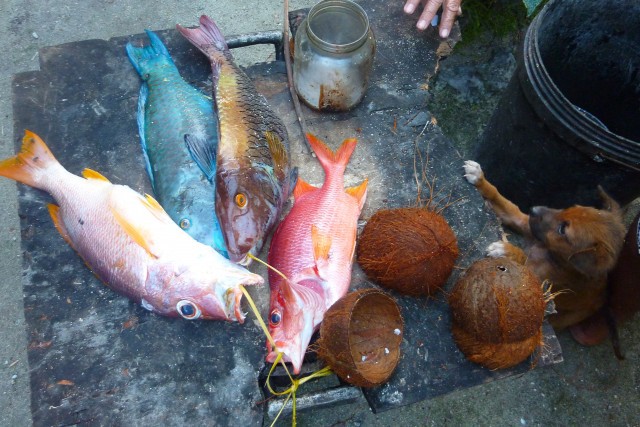
Assuming they basically tasted like the lobster that Americans would be familiar with — what other things were really similar but looked different on the surface?
Yup, it was pretty normal lobster-tasting. So on Sapwuahfik, there are about 200 people living on this tiny island (walkable in an hour). There are no roads or cars, no businesses, no electricity or running water. It looks nothing like New York or my hometown, to say the least, and I spent the first day or so just trying not to gawk at everything. But the rhythms of life are the same. Families wake up in the morning, chores are done, breakfast is made. The younger kids go to school, the women do housework, the men go spear fishing (or get drunk). In the afternoons, lots of folks take a nap or visit friends and eat bananas. At night, dinner is prepared and eaten, people hang out, then generally go to sleep early (while the teenagers sneak out). Really, not all that different than what we do in the US — we just make things a lot more complicated!
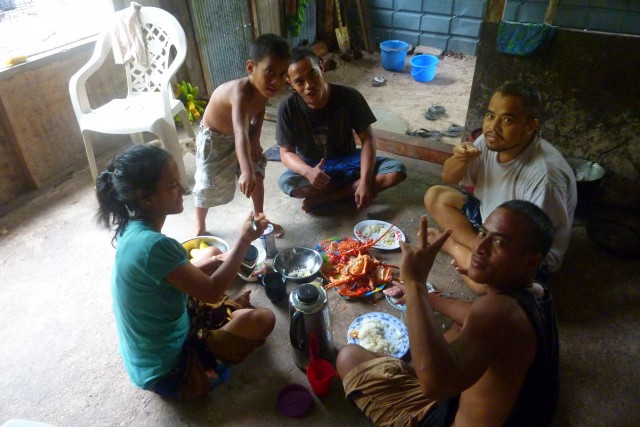
Sorry if these questions are a little spacey — I’ve been sending out a lot of these questionnaire type things, and want to come up with new stuff, but also not be boring!
Do you have any funny or weird stories about bathrooms? Sorry, this is getting lower-brow with each installation. But still. Bathrooms!
So on the family “compound” (sisters, uncles, cousins, etc. tend to build their homes around a common area), there was a little outhouse as well as bathing/laundry area with a well and rain catchment. I read a bunch of Peace Corps blogs before I left, and had these terrifying nightmares of cockroaches crawling up my leg when making an outhouse run at 2 a.m. That did not happen. Though I did receive a few ill-placed mosquito bites, if you know what I mean. Also, I snuck some toilet paper in my bag for the trip and it was the Best. Decision. Ever.
What I hadn’t thought about beforehand was the bathing part. When the time came, I was pointed in the direction of the bath/laundry area, so I wandered in, looked down into the well, and saw a bucket. I remember thinking, “Shit, I forgot to Google bucket bath directions before I left!” So I stood in there for a minute or two trying to assess the situation before my host mom, sensing my awkwardness (the bathing area was totally open), came over laughing and pointed out the rain catchment spout. Luckily the family had hosted a Peace Corps volunteer a few years ago, so they kind of knew what to expect from me.
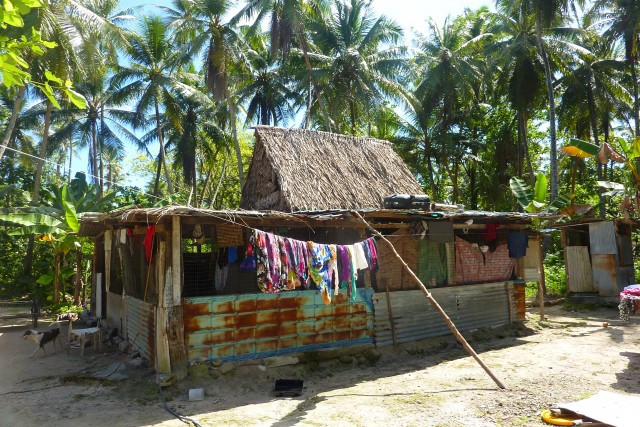
What were three interesting things you learned? Could be anything.
Dog meat tastes pretty good.
Leftover In Style magazines will make it to the most remote areas of the world.
Tetanus can be cured by hitting the affected area with tree bark. (Okay, may not be true, but that’s what I was told.)
How do you bucket shower?
Hah, yes! Essential developing country travel skill! It’s really just a matter of pouring small buckets of water over your body, whether it’s in a river, a bathtub, or whatever. While traveling, I’ve generally had a big bucket full of water and a smaller cup. Strategically pour some water over your head with the cup, shampoo, pour more water to rinse. Repeat with soap. The better you get at this, the less water you need. I’ve also gotten in the habit of bringing two-in-one shampoo/conditioner with me when I know I have bucket showers in my future.
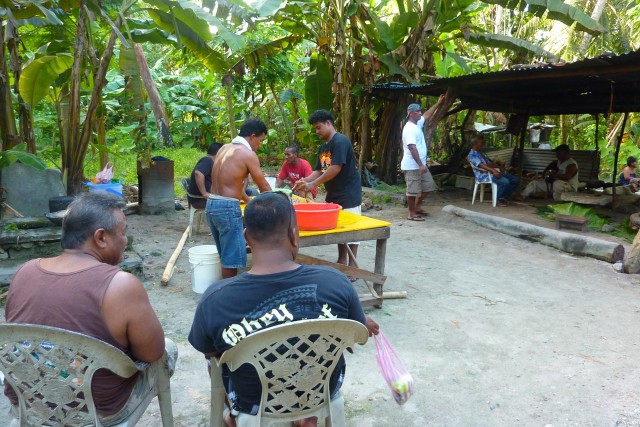
Are there any products or practices you’ve abandoned since your trip? Like — things that used to be a part of your regular life but you realized aren’t useful or important? Or, are there things you’ve added or changed?
Hmmm … If anything, throughout my year in Micronesia, I just got used to living with less in general. When you’re out in the Pacific, you’re kind of in constant deprivation mode and learn to adapt to the container ship ebb and flow of life. There were many points during the year where I’d walk into the grocery mart on Pohnpei and it’d be pretty sparse (though we were lucky to have a grocery store at all!). Many things that were shipped from the mainland were also too expensive on a volunteer budget anyway. So less than abandoning specific products or practices, I’ve just gotten a lot better at doing without things I’ve thought that I needed, getting by on a suitcase’s worth of clothing for a year, and substituting ingredients like crazy while cooking.
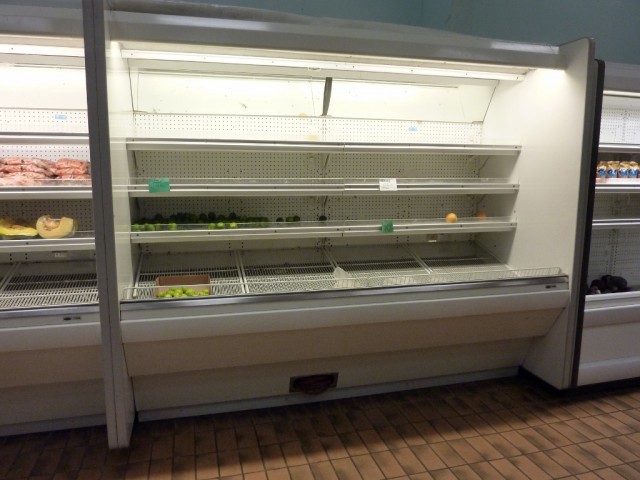
Only just now am I taking your instructions about Googling Sapwuahfik, and holy shit. I had to zoom back like 10 clicks before I even saw any other land. Maybe this is a little late in the “interview,” but what was it like there?
Again, just really tiny and really really remote. Just imagine a place where everything you know means nothing. One of the things that struck me the most when I was there was just how helpless I was! I felt like some six-year-old that my host family adopted — they took care of me and I was completely at their mercy. I would constantly offer to help with cooking or morning chores, but was always turned down — out of politeness, but mostly because I don’t know how to wash clothes by hand, how to cut a fish, or what to do when handed a giant swamp taro. My superhero host mom even said to me, “It’s okay, we know you don’t know how to do these island things.” They did teach me how to properly shave a coconut, but I haven’t actually used that skill since I left.
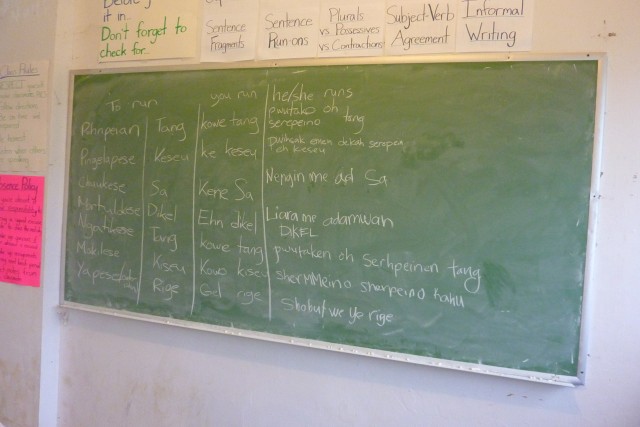
Where do you want to go next?
I’m planning to stay put for a while now that I’m home, but I would really like to do some more traveling within the US. I’d love to take a road trip down south since I’ve never been (Disney World doesn’t count), and maybe end up in New Orleans. Or Austin!
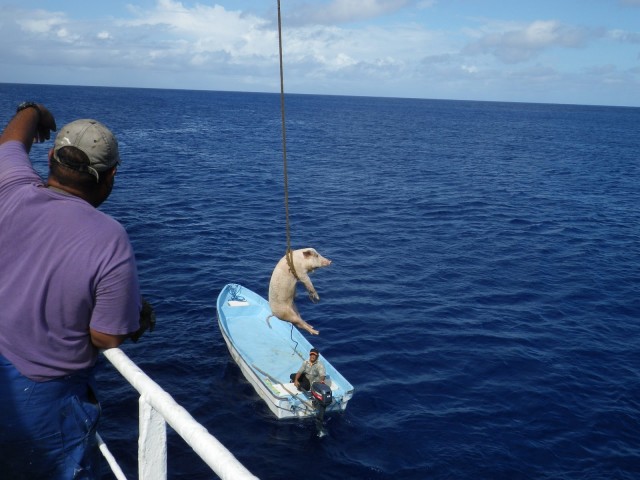
Anything else?
Erm, maybe just that this story sounds like all smooth sailing. I always feel guilty when I’m home and telling a travel story, because it makes it seem like being away is the best day ever, every day. This is not true. We leave out a lot of the tougher details when we reflect back. I spent a lot of the trip to Sapwuahfik being scared! On the ship ride out there, I was shivering as I tried to sleep on the boat deck, and realized I was completely alone and hadn’t thought through things at all before leaving. I was scared when I was lifted into a skiff to get from the ship to the island in the middle of a storm on choppy water. I was scared when I got harassed by some of the local guys on the island and realized if something bad happened, there was nothing I could do. I was scared sitting around with my host family the first day, since I didn’t speak Ngatikese and had no idea how to act. I was also REALLY scared when the return date of the cargo ship was unconfirmed and people weren’t sure when it would come back to the atoll. While everything turned out okay in the end and I am so glad I went, to be honest, my decision to go was pretty naive and irresponsible … But again, glad I went!
Also, if anyone tells you that sleeping in a hammock on a ship will help avoid seasickness by going with the motion of the boat, punch them in the gut. Worst advice ever.
Also! Sorting through photos and reading “Alone in Uganda” made me think that you might want to ask, “How do you get to Micronesia?”
So, first you have to get to Hawaii. There’s one airline that runs the “island hopper” flight between Honolulu and Guam three times a week — you leave Hawaii at 5 a.m., and the flight stops twice in the Marshall Islands, then hits Kosrae, Pohnpei, and Chuuk in Micronesia before ending in Guam. From New York to Pohnpei, it takes somewhere between 30–40 hours flying and transferring, and unfortunately, the island hopper flight is crazy expensive since United Airlines runs a monopoly out there in the Pacific. Fun fact: As I tried to book my flight home at the end of the year, they told me all the flights off the island were booked full for a month! (Eventually things got worked out.)
Getting to one of the Pohnpeian outer islands, like Sapwuahfik, is a bit of a different story. Three of the five islands have tiny airstrips for chartered planes, but otherwise are only served by that twice-yearly cargo ship I mentioned before. Basically the rumor goes out around the “coconut wireless” that the ship is arriving next week (or in three days! or tomorrow! or in two weeks!), and most of the time, the ship does eventually show up and announce that it’s leaving the following day. Outer islanders stock up on bags of rice, jars of instant coffee, sugar, family pigs, chickens, bushels of bananas, etc. and get on board. Almost everyone brings little sleeping mats and sleeps on the ship deck, most of which is covered by a big tarp to serve as some shelter from the rain and waves. You also have to pack all the food you’re planning to eat, so families bring huge bowls of rice, cooked hotdogs, and lots of ramen with them. The ride from Pohnpei to Sapwuahfik is only overnight, but to reach the farther two islands, it takes two or three nights. Once the ship makes its stop at the farthest island, it docks for a day or two, then starts the return trip (though this is all subject to change).
One of the most memorable moments of Micronesia for me would be that return ride to Pohnpei! The ship was packed after it picked up more passengers from the outer islands, so there was no room to stay on the front ship deck under the tarp. I hung out with my student and his older siblings and cousins, and listened to the half-dozen ukuleles being played at the back of the ship. We heard from the other passengers that a woman gave birth on the ship deck in the middle of a huge storm the night before and named her child after the ship’s captain! But anyway, we drank scalloway (think coconut wine) and ate roasted dog (sorry!) and bowls of ramen after the sun went down. Although I did end up getting violently seasick (the hammock and scalloway did NOT help), things settled down around sunrise. Approaching Pohnpei that morning was one of the most beautiful things I’ve ever seen — I had never seen the island from far away before, so green and lush, and the sun was just coming up… Though I was probably also delirious with seasickness, so that might have had an impact too!
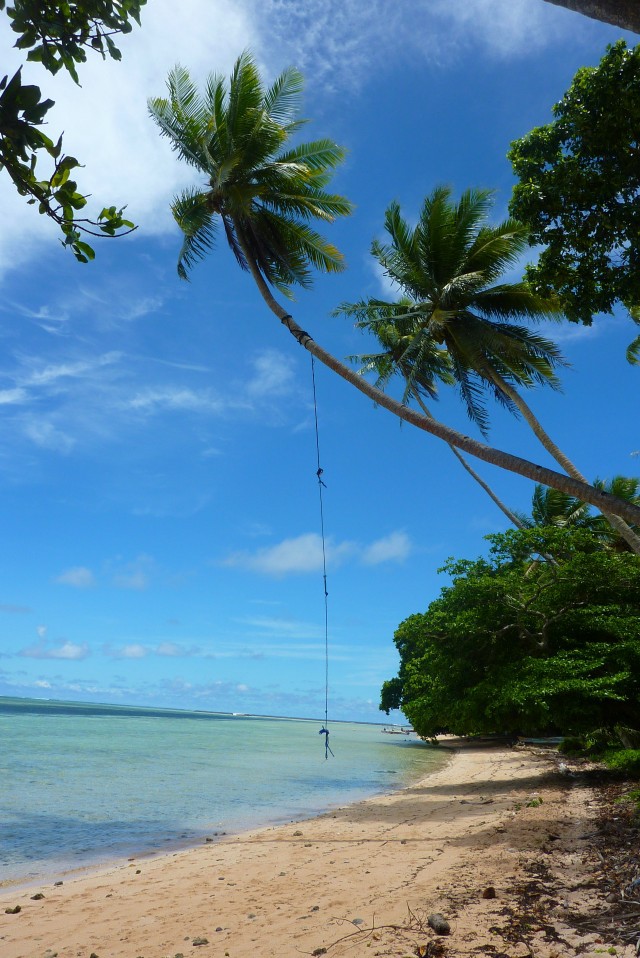
Previously: Hiking the Tetons
Emily Maretsky is a user experience explorer at The New York Times, though she might be your daughter’s/cousin’s/little brother’s kooky math teacher come September. She lives in Brooklyn (mainly because bagels suck everywhere else) and loves giving travel advice.